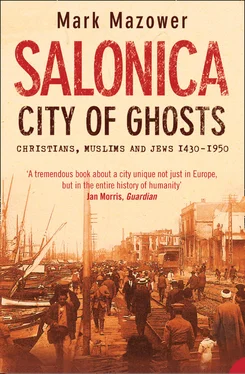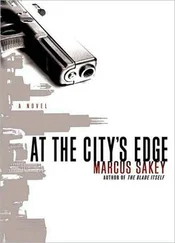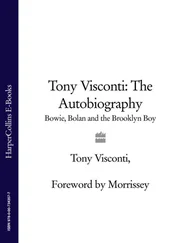1 ...6 7 8 10 11 12 ...35 As ever, Murad followed the customary laws of war. By refusing to surrender peacefully, after they had been given the chance, Salonica’s inhabitants had – as they knew well – laid themselves open to enslavement and plunder. Had they been allowed to follow the path of non-resistance that most of them wanted, the city’s fate might have been less traumatic. A few months later, Ottoman troops went on to besiege the city of Jannina, and their commander, Sinan Pasha, advised the Greek archbishop to surrender peacefully ‘otherwise I will destroy the place to its foundations as I did in Salonica.’ ‘I swear to you on the God of Heaven and Earth and the Prophet Mohammed,’ he went on, ‘not to have any fear, neither of being enslaved nor seized.’ The clergy and the nobility would keep their estates and privileges, ‘rather than as we did in Salonica ruining the churches, and emptying and destroying everything.’ Jannina obeyed and remained an important centre of Hellenic learning throughout the Ottoman period: indeed one of Murad’s generals actually founded a Christian monastery there. Salonica’s fate was very different: ruined and eerily quiet, its streets and buildings lay empty. 16 In the Acheiropoietos church the sultan held a victory thanksgiving service. Then he had the building turned into a mosque, and ordered a laconic inscription to be chiselled into a marble column in the north colonnade of the nave. There it survives to this day, and if your eyesight is good enough, you can still make out in the elegant Arabic script: ‘Sultan Murad Khan took Thessaloniki in the year 833 [=1430]’.
2 Mosques and Hamams
The Mightiest War
CENTRES OF TRADE, learning, religious piety and administrative control, cities were essential for the prosperity of the Ottoman lands. Yet as the sultans knew, it is one thing to conquer a city, another to restore it to life. In 1453, Mehmed the Conqueror called the task of reviving Constantinople after its conquest the ‘mightiest war’ compared with which the business of taking it had been merely one of the ‘lesser wars.’ Twenty years earlier his father, Murad, had viewed Salonica in a similar light. The man who for all his military genius was reputed ‘not to love war’, now pondered how to return it to its former glory. No other city in his domain matched its imposing fortifications or its commercial possibilities. It was the key to the Balkans, and the Balkans were fast on their way to becoming the economic powerhouse of his empire. According to Anagnostes: ‘When he saw a city so large, and in such a situation, next to the sea and suitable for everything, then he grieved and wanted to reconstruct it.” 1
The first thing he did was to chase out the looters, camp-followers and squatters. ‘The money and slaves which you gained should be enough,’ he told his troops, T want to have the city itself and for this I made many days’ march and tired myself, as you know.’ He began by repairing the damaged walls and ordered the new garrison commander to modernize the fortress. Less than one year later, an inscription above the entrance to the newly built main tower marked the swift completion of the work. ‘This Acropolis,’ it runs, ‘was conquered and captured by force, from the hands of infidels and Franks, with the help of God, by Sultan Murad, son of Sultan Mehmed, whose banner God does not cease to make victorious. And he slaughtered and took prisoner some of their sons, and took their property.’ 2
Murad’s initial thought was ‘to return the city to its inhabitants and to restore it just as it had been before.’ Anagnostes tells us that he would have liberated all the captives had not one of his senior commanders prevented him. As it was, he personally ransomed members of some of the city’s notable Byzantine families (as was his custom after a siege), and his vassal, the Serbian despot George Brankovich – whose daughter Mara he married a few years later – paid for others. In all, about a thousand Greek ex-prisoners were thus rescued from slavery and returned to their homes. They were joined by refugees who had fled the siege earlier and were now ordered back. Shocked by the scenes of devastation that greeted them, they blamed Archbishop Symeon for having blocked a peaceful outcome to the siege, and some even questioned the powers of St Dimitrios himself. Gradually, the Byzantine caravanseray , public baths, old manufactories, tanneries and textile workshops were brought back to life. The Venetians patched up their relations with the sultan and were allowed to set up a consulate one year after the conquest. But the city was a shadow of its former self, a mere vestige of the flourishing metropolis of forty thousand inhabitants which had existed a decade earlier.
Once Murad realized the extent of its depopulation, he changed his mind and decided to bring in Muslim settlers as well. He handed over many properties to senior officials at his court, and craftsmen, attracted by tax breaks, were resettled from the nearby town of Yannitsa and from Anatolia. Their arrival injected new blood into the urban economy. But it was a major blow to the city’s Christian identity and the Greek survivors were shocked. Salonica, wrote Anagnostes, ‘wore this ugliness like a mourning garment … The hymns to God and the choirs have fallen silent. In their place one hears nothing but alalagmoi [the sounds of Allah] and the noise of the godless who make Satan rejoice. And yet no sign of divine anger has appeared to punish the unbelievers who defiled the churches, made families and houses vanish, looted and destroyed churches and the city.’ 3
Thousands of the city’s former inhabitants were still enslaved. ‘On numerous occasions we saw Christians – boys as well as unmarried girls, and masses of married women of every description – paraded pitiably by the Turks in long lines throughout the cities of Thrace and Macedonia,’ wrote the Italian merchant-antiquarian Cyriac of Ancona. They were ‘bound by iron chains and lashed by whips, and in the end put up for sale in villages and markets … an unspeakably shameful and obscene sight, like a cattle market.’ (Cyriac’s sorrow did not prevent him buying a young Greek slave and sending her home to his mother’s household). Some converted to Islam in the hope of better treatment; others, yoked to one another by the neck, could be seen begging for alms in the streets of the capital, Edirne, where they were brought to be sold off, or entered the imperial service. 4
Yet the Sultan certainly did not intend to wipe out Christianity from the city. It was not only that this would have been economically harmful; it would also have been contrary to Ottoman practice and his own beliefs. In fact, he quickly appointed a new archbishop, Gregorios, and his Serbian Orthodox wife, Mara, herself became a notable benefactor. Churches and monasteries were reconfirmed in their possessions (in one case perhaps, as a malicious fifteenth-century chronicler alleged, because the monks had helped the Turks conquer the town). In keeping with the Muslim custom in cases where towns had been won by force, a few churches were converted into mosques, looted for building materials, turned into private homes or abandoned. But how many were taken over at the start is hard to say. Anagnostes claims that only four remained in Christian hands: yet even after Murad began to bring in Muslims in 1432 many ecclesiastical foundations continued to collect substantial revenues from their estates. After all, there was no point converting churches into mosques if there were not the congregations to use them: the wave of conversion thus followed the slow expansion of the Muslim population. Of the city’s noblest buildings, Ayios Dimitrios was converted into a mosque only in 1491, Ayia Sofia and the Rotonda a century later. 5
Читать дальше











